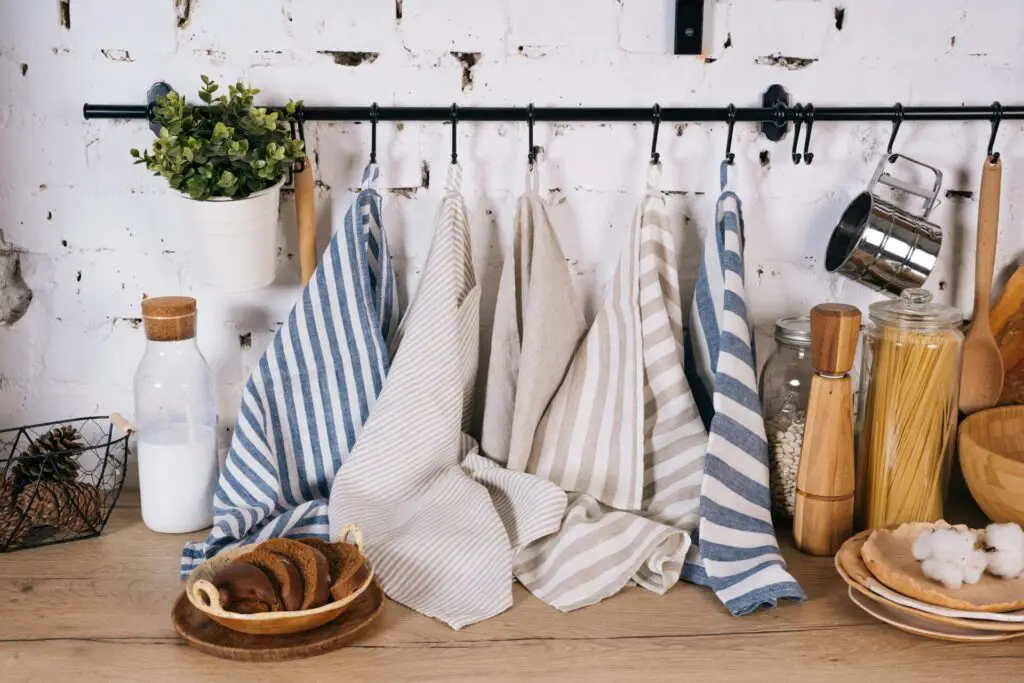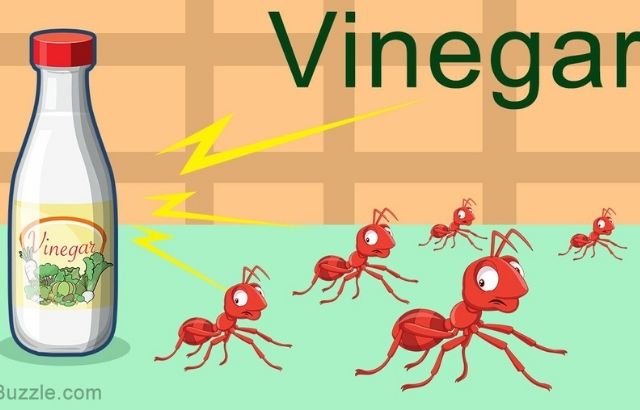Making hanging kitchen towels is easy and fun. You can create stylish and practical towels in a few steps. If you’ve been wondering how to make hanging kitchen towels, you’ve come to the right place.
A hanging kitchen towel is a great addition to any kitchen. It helps keep your towel in place, reducing clutter and mess. Whether you are a beginner or an experienced crafter, making hanging kitchen towels can be a satisfying project.
You can customize them to match your kitchen decor and add a personal touch. Plus, they make great gifts for friends and family. This guide will walk you through the process step-by-step, ensuring you have all the information you need to make your own hanging kitchen towels. Get ready to transform your kitchen with this simple yet effective DIY project!
Introduction To Hanging Kitchen Towels
Hanging kitchen towels are a fantastic way to keep your kitchen tidy and organized. They are not just practical; they can also add a touch of style to your kitchen. Whether you are a seasoned crafter or a beginner, making your own hanging kitchen towels can be a fun and rewarding project.
Benefits Of Hanging Towels
Hanging towels have several advantages over regular towels. Firstly, they stay put. You don’t have to worry about them falling off the oven handle or sliding off the counter. This keeps your kitchen cleaner and more organized.
Another benefit is accessibility. When your towels are hanging, they are always within reach. No more searching for a towel when you have wet hands or need to quickly wipe a spill.
Lastly, they can be a delightful addition to your kitchen decor. You can choose fabrics that match your kitchen’s color scheme or go for fun, seasonal patterns. The possibilities are endless!
How to Make Hanging Kitchen Towels

Choosing The Right Materials
Picking the right materials is crucial for making hanging kitchen towels. You will need a towel, fabric for the hanging part, and a button or snap. Cotton towels work best as they are absorbent and easy to work with.
For the hanging part, choose a fabric that is durable but not too thick. Quilting cotton or a sturdy cotton blend is a good choice. Make sure the fabric complements the towel color or pattern.
When it comes to fasteners, buttons and snaps are the most popular choices. Buttons add a classic touch, while snaps are quick and easy to use. Consider the look and functionality you prefer for your kitchen.
Have you ever tried making your own hanging kitchen towels? What materials did you use, and how did they work out for you? Share your experiences in the comments!
Materials Needed
Gather fabric, thread, and scissors to create hanging kitchen towels. You’ll also need buttons or snaps for securing. A sewing machine will help stitch everything together smoothly.
Making your own hanging kitchen towels is a fun and practical way to add a personal touch to your kitchen. Before you start, you need to gather all the necessary materials. This not only makes the process smoother but also ensures your towels turn out beautifully.
Fabric Types
Choosing the right fabric is crucial. Cotton is an excellent choice because it is absorbent and easy to work with. You can also go for terry cloth if you prefer a thicker towel. For a more decorative touch, consider using patterned fabrics. Think about color and design. You want your towels to match or complement your kitchen decor. Personally, I once used a bright, floral pattern that added a fresh vibe to my kitchen.
Tools And Accessories
Having the right tools can make your sewing experience more enjoyable. You will need a sewing machine, fabric scissors, and pins. A fabric marker will help you mark where to cut. Don’t forget the small but essential items. You’ll need buttons or Velcro for the hanging part. Choose ones that are sturdy and can handle frequent use. A handy tip: Keep a small box for all your sewing accessories. This keeps everything organized and within easy reach. By focusing on these materials, you set yourself up for a successful DIY project. What fabric and tools will you choose for your hanging kitchen towels?
Design Ideas
Create functional and stylish hanging kitchen towels with simple sewing techniques. Personalize your kitchen while keeping towels within easy reach. Save space and add a decorative touch effortlessly.
### Design Ideas Creating your own hanging kitchen towels opens up a world of design possibilities. You can tailor them to match your kitchen decor, or add a personal touch that makes them uniquely yours. Here are some fun and practical design ideas to get you started.
Patterns And Colors
Choosing the right patterns and colors can transform the look of your kitchen. A bright, cheery pattern can add a splash of color to an otherwise neutral space. Think about using classic stripes for a timeless look or whimsical prints for a bit of fun. Don’t be afraid to mix and match. Combining different patterns can create a playful and eclectic feel. If your kitchen is mostly white, adding a vibrant towel can act as a focal point. Consider the seasons. Use pastel colors and floral patterns in spring, and switch to rich, warm tones for fall. This keeps your kitchen looking fresh and updated throughout the year.
Personalization Options
Personalizing your hanging kitchen towels can make them extra special. Embroidering your initials or a favorite quote is a great way to add a unique touch. If you’re feeling creative, you can even add small designs like a heart or star. Do you have kids? Let them pick out their favorite colors or patterns. This simple act can make them feel involved and excited about helping in the kitchen. Think about adding practical features too. A small pocket can hold a wooden spoon or a recipe card. This makes your towels not just beautiful, but also functional. Why settle for store-bought when you can create something that truly reflects your style and needs? The sky’s the limit when it comes to design ideas for hanging kitchen towels. How will you personalize yours?
Cutting The Fabric
When making hanging kitchen towels, the cutting process is crucial. It sets the foundation for a neat and professional-looking towel. This section will guide you through measuring dimensions and cutting techniques to ensure precision and ease.
Measuring Dimensions
Start by measuring your fabric accurately. The standard size for kitchen towels is usually around 16×28 inches. However, you can adjust these dimensions based on your preference.
Use a measuring tape to mark your fabric. Ensure the edges are straight by using a ruler or a quilting square. Double-check your measurements to avoid any mistakes.
Cutting Techniques
Once you’ve measured, it’s time to cut. Sharp scissors or a rotary cutter are essential for clean cuts. Avoid dull blades as they can fray your fabric.
Place your fabric on a flat surface. Hold it taut to prevent wrinkles. Cut along the marked lines, maintaining steady pressure for smooth edges.
For a personal touch, consider using patterned fabric. It adds character to your kitchen towels and makes them unique. Remember, attention to detail in cutting will reflect in your finished product.
Have you ever thought about adding decorative trims to your towels? It’s a simple way to enhance their look.
Sewing The Towels
Creating your own hanging kitchen towels can be a fun and rewarding project. It not only adds a personal touch to your kitchen but also makes for a great gift. This section will guide you through the essential steps of sewing the towels. By following these steps, you can ensure your towels are both functional and stylish.
Basic Sewing Steps
Start by choosing your fabric. Cotton or linen works best. Cut the fabric into a rectangle, the size of your choice. Fold the fabric in half with the right sides facing each other. Pin the edges to keep them in place.
Sew along the edges, leaving a small gap. Turn the fabric right side out through this gap. Press the fabric with an iron to flatten it. Sew the gap closed with a top stitch. This creates a neat finish.
Adding Hems And Edges
To add a hem, fold the edges of the fabric over twice. This hides the raw edges. Pin the folded edges to secure them. Sew along the folds to create a clean hem.
For a decorative edge, use a zigzag stitch. This adds both style and strength. You can also add trim or lace for extra flair. Attach the trim by sewing it along the edges of the towel.
Finally, add a loop for hanging. Cut a small strip of fabric or use a ribbon. Fold it into a loop and sew it to one corner of the towel. Your hanging kitchen towel is now complete and ready to use.
Attaching Hanging Mechanisms
Attaching hanging mechanisms to kitchen towels can transform them from ordinary to handy. This step is crucial for making your kitchen towels easy to access. It also adds a touch of personalization. You can use various types of loops and secure them in different ways. Let’s explore some options.
Types Of Hanging Loops
The first decision is choosing the type of loop. Fabric loops are common and can be made from scraps. Ribbon loops are another option. They add a decorative touch. Elastic loops are practical. They stretch, making them easy to use. Choose the one that fits your style and needs.
Securing The Loops
After selecting your loop, it’s time to secure it. Start by folding the loop material in half. Place the folded end at the top of the towel. You can sew the loop by hand or use a machine. Make sure the stitches are tight. Double-stitch for extra strength. The loop should be secure and ready to hang.
Finishing Touches
Adding finishing touches to your hanging kitchen towels can make them unique. This step allows you to personalize your towels, making them both functional and stylish. Let’s explore how to add those final details that will set your towels apart.
Embellishments And Decorations
Choose embellishments that suit your kitchen decor. You can add buttons, ribbons, or lace. These items bring a touch of elegance and personality. Sew decorative trims along the edges for a refined look. Use fabric paint to create patterns or designs. This adds a colorful and creative element. Consider stitching a small pocket for added utility. This makes the towel both pretty and practical.
Final Inspection
Inspect your towel for any loose threads or uneven stitches. Trim any excess fabric to ensure a clean finish. Check that all embellishments are securely attached. Test the hanging loop to make sure it holds well. Make sure the towel is neatly folded and hangs straight. This final step ensures your towel looks professional and polished.
Care And Maintenance
Proper care and maintenance ensure the longevity of your hanging kitchen towels. Follow these simple steps to keep your towels looking fresh and new. This section will guide you through washing instructions and repair tips.
Washing Instructions
Wash your hanging kitchen towels regularly. Use a mild detergent to protect the fabric. Avoid bleach as it can weaken the fibers. Wash in cold or warm water to prevent shrinking. For tough stains, pre-treat with a stain remover. After washing, hang them to dry or use a low-heat setting on your dryer.
Repair Tips
Small tears and loose threads can be fixed easily. Use a needle and thread to mend small holes. For larger tears, consider using a patch. Reinforce the hanging loop if it becomes loose. These simple repairs can extend the life of your kitchen towels.
Frequently Asked Questions
What Materials Are Needed For Hanging Kitchen Towels?
To make hanging kitchen towels, you’ll need fabric, scissors, a sewing machine, thread, and a button. These materials are easy to find and affordable.
How Do I Start Making Hanging Towels?
Begin by choosing a fabric and cutting it into the desired shape. Fold and hem the edges to prevent fraying.
Can I Make Hanging Kitchen Towels Without A Sewing Machine?
Yes, you can hand-sew the edges and attach the button manually. It might take longer but is equally effective.
What Are The Benefits Of Hanging Kitchen Towels?
Hanging kitchen towels are convenient, reduce clutter, and keep towels within easy reach. They also add a decorative touch to your kitchen.
Conclusion
Creating hanging kitchen towels is simple and fun. These towels add charm and functionality to your kitchen. Follow the steps to craft your own unique towels. You can choose your favorite fabric and designs. Enjoy this creative project. Soon, your kitchen will have a personal touch.
Start today and see the difference. Happy crafting!




